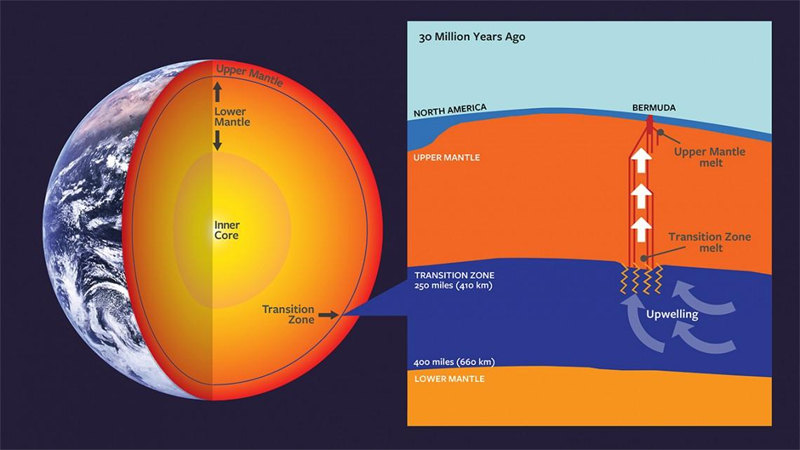Newsweek Highlights Volcano Formation
Newsweek has highlighted “a volcano beneath Bermuda that formed in a way that has never been seen before,” with researchers “analyzing a now dormant volcano beneath the Atlantic Ocean that was responsible for the formation of Bermuda.”
The story said, “A volcano beneath Bermuda formed in a way that has never been seen before, scientists have discovered. The volcano appears to have been created by material rising up from a region deep beneath Earth’s surface—the transition zone.”
“The transition zone is the region between the upper and lower mantle. It extends between 250 and 400 miles beneath the surface of the planet and is rich in water, crystals and melted rock.
“Volcanoes normally form when the tectonic plates are pushed together or pulled apart, producing a crack in Earth’s surface where magma can escape. They can also form at “hotspots,” where mantle plumes rise up and melt a hole in the plate—Hawaii is an example of this.
“Now, researchers have found volcanoes can also form when material moves up from the transition zone. The team believes there was a disturbance in the transition zone that forced the material in this layer to melt and move up towards the surface. Their findings are published in the journal Nature.”
“The researchers were analyzing a now dormant volcano beneath the Atlantic Ocean that was responsible for the formation of Bermuda. They were looking at the chemical composition of a 2,600-foot core sample—by understanding its makeup they could build a picture of Bermuda’s volcanic history.”
“Before our work, Bermuda has been interpreted as the result of a deep thermal anomaly in the Earth’s mantle, but there was no direct data to support this. This is due to the fact that the volcanic edifice is completely covered by limestone,” Cornell’s Esteban Gazel, one of the study authors, told Newsweek.
You can read the full story here on Newsweek.
Category: All, Environment



